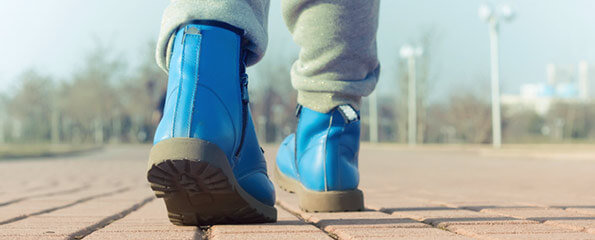Treatment for children with Charcot-Marie-Tooth disease
A new research study from the University of Sydney has found that for children with Charcot-Marie-Tooth disease, the most effective way to treat their condition is with exercise.
There is new hope for children with Charcot-Marie-Tooth disease (CMT), an incurable genetic disease of the nerves that causes progressive and debilitating muscle weakness, with a world-first study finding the first effective treatment for the disease – exercise.
Led by Professor Joshua Burns from University of Sydney and The Children’s Hospital at Westmead, the study found that progressive resistance exercise could help to significantly reduce the muscle weakness experienced by patients with the genetic disease.
Published in The Lancet Child & Adolescent Health, the study showed that six months of moderate-intensity progressive resistance exercise could help not only slow the progression of muscle weakness by up to 30% compared to CMT patients who did not exercise, but also strengthened their muscles over a two-year period.
Affecting approximately 15,000 Australians, Charcot-Marie-Tooth disease causes a myriad of motor and sensory impairments, with the most debilitating impairment occurring in the feet and ankles.
Often, the weakness of these muscles will cause painful foot deformities (such as rigid high-arches, hammer toes), lifelong difficulty performing everyday tasks (such as walking and climbing stairs) and injuries resulting from trips and falls.
But it is now hoped exercise can be used to minimise these problems.
“For patients with CMT, the results of this trial are life-changing, helping to not only improve their chronic pain and reduce the degree of disability, but also greatly helping to improve their quality of life,” said Professor Burns, Research Leader of Musculoskeletal Health across the Faculty of Health Sciences at University of Sydney and Director of the Paediatric Gait Analysis Service at The Children’s Hospital at Westmead.
“In partnership with clinicians, scientists and patients all over the world, we are also working on medications to ultimately cure CMT, but exercise is an important bridging therapy for children and adults in the meantime.”
The nine-year program of exercise research performed across University of Sydney, Sydney Children’s Hospitals Network and University of NSW and culminating in a randomised clinical trial, specifically focused on exercises that targeted the muscles in the feet. However, given the trial’s success, similar targeted exercises can now also be applied to other affected muscles in the body in a safe and effective way.
The next step is to develop a translation strategy to directly impact clinical practice and improve health outcomes for patients with CMT locally, nationally and internationally.
(Source: The University of Sydney, The Lancet Child & Adolescent Health)
Dates
Tags
Created by:

 Login
Login














